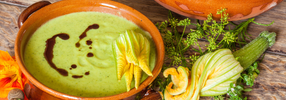
Organ series: stomach
The health of our organs plays a major role for your well -being and fitness. But do you actually know how every single organ of your body actually works? If you are not studying medicine or are interested in it privately, the answer is usually open to you. Therefore we would like to educate you and bring the human organs closer to you.
In the next few months, new blog posts are waiting for you again and again. We will explain the functions of our organs, the connection with histamine intolerance and much more.
Today we continue with the stomach. Did you know that the stomach produces acids and bases at the same time? Certain cells in the stomach produce the strongly acidic hydrochloric acid and at the same time the basic sodium hydrogen carbonate. That is why the stomach is, among other things, an important building block to keep the acid-base balance in our body.
Tasks and functions of the stomach
- Destruction of harmful bacteria, fungi, pathogens and parasites in food
- Preparation of the dining area for the intestine, shredding and liquefaction of the food
- Denaturation of the proteins so that they can be split up better
- Activation of the protein -splitting enzyme pepsin
- Production of the intrinsic factor, which is responsible for the inclusion of B12
The stomach naturally belongs to our digestive tract and has a strongly acidic pH of 1 to 2. It is about as acidic as lemon juice. His task is to crush the food absorbed into a chimney. The forwarding of the dining area in the intestine can take 30 minutes up to 7 hours depending on the meal composition. Muscle movements swing the cheat back and forth, while the cheat is mixed with gastric acid. The cheeky porridge is saved for some time and then well -dosed from the gastric porter to the small intestine, where it is digested further.
Multicolumn
-
Location in the body
The stomach lies - between spleen and liver - in the left and middle upper abdomen, below the diaphragm. At the upper end the esophagus flows in, at the bottom the stomach on the so -called stomach porter, a ring -shaped sphincter, changes into the duodenum.
-
Organ clock
During the course of the day, each organ has its absolute highlight in activity and as an opposite pole! Starting with the stomach, all digestive organs have their maximum activity in the morning and early afternoon. Since the minimum times in the evening and at night are therefore, this means that the digestion is very economical at these times.
- Strongest activity: 07 to 9 a.m.
- Rest phase: 7 p.m. to 9 p.m.
Mental component
The close connection between the stomach and head can be explained why stress literally "strikes on our stomach" or "pissing us up".
When stressed and grief, either of all appetite dies or we start to stuff everything into us indiscriminately. People with grief, so they are very quick to weight or decrease. The brain reacts to mental stress with the release of stress hormones and alerts the abdominal brain.
The psyche undoubtedly also has an impact on the activity of the stomach. Under stress, the brain and the "abdominal brain" work closely together to bring the body through this phase. Anyone who has a sensitive stomach reacts in stressful situations with nausea, heartburn, bloating, diarrhea or constipation.
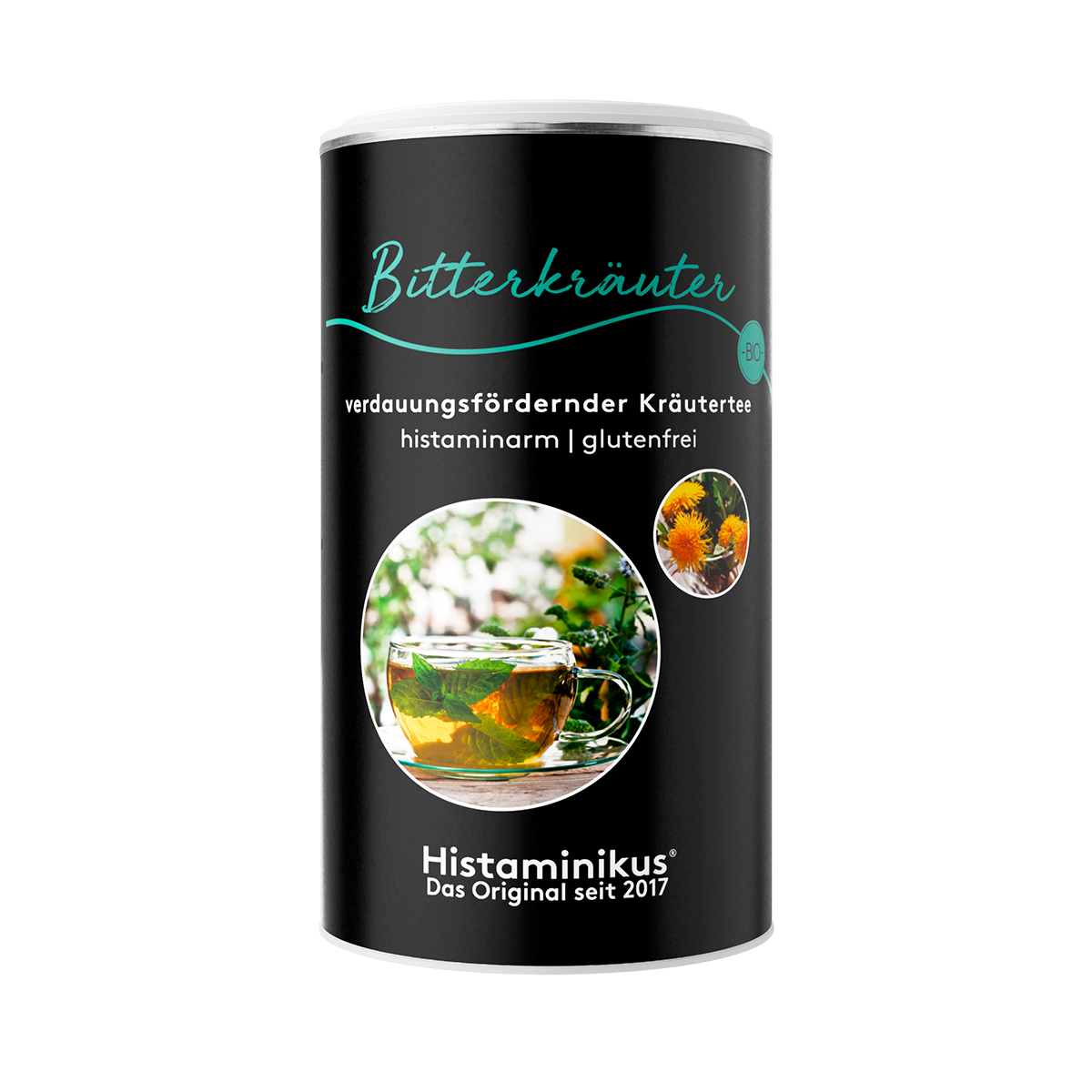
Advertisement
Histaminikus
Bitter herbs organic
4.74 / 5.0
(19) 19 total reviews
Share
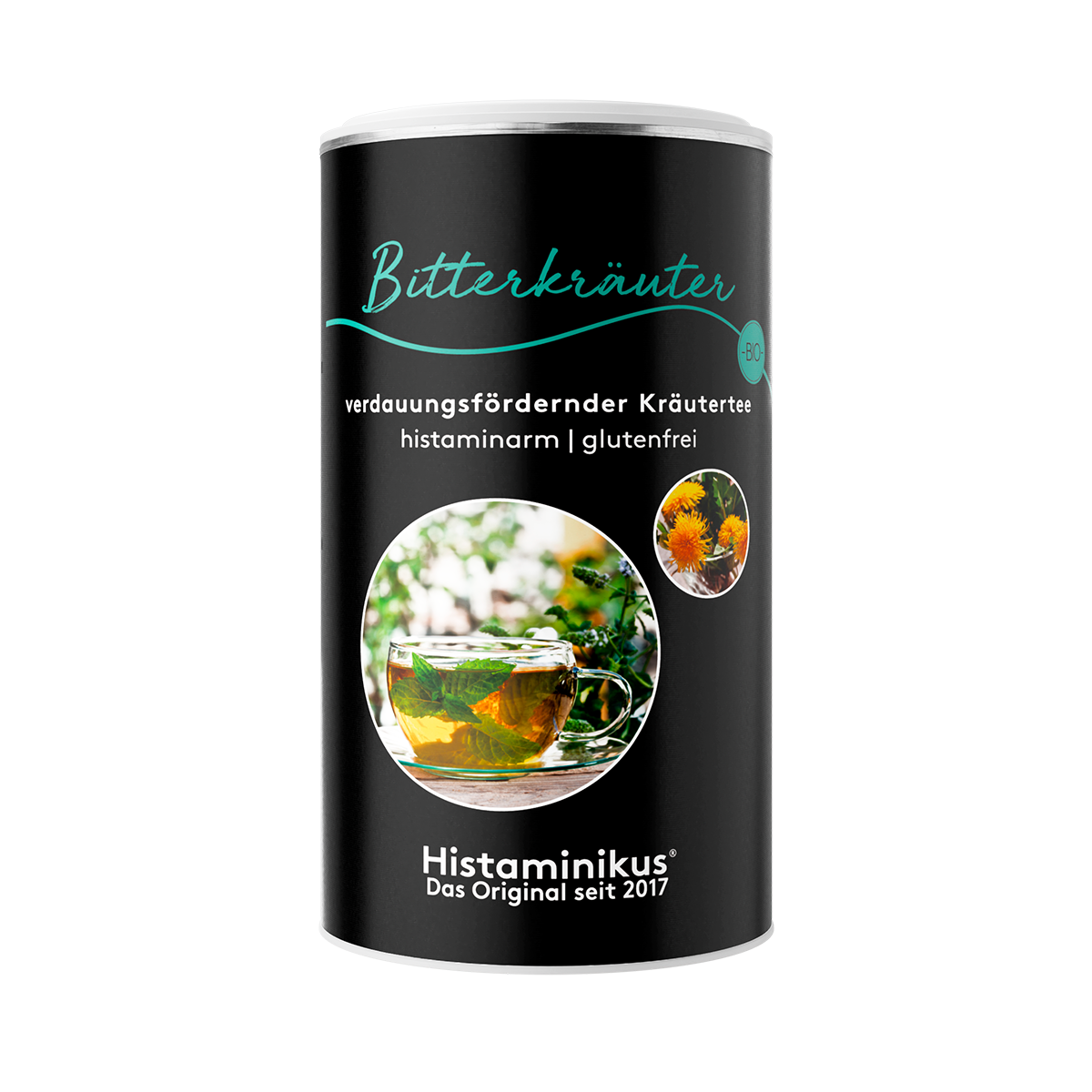
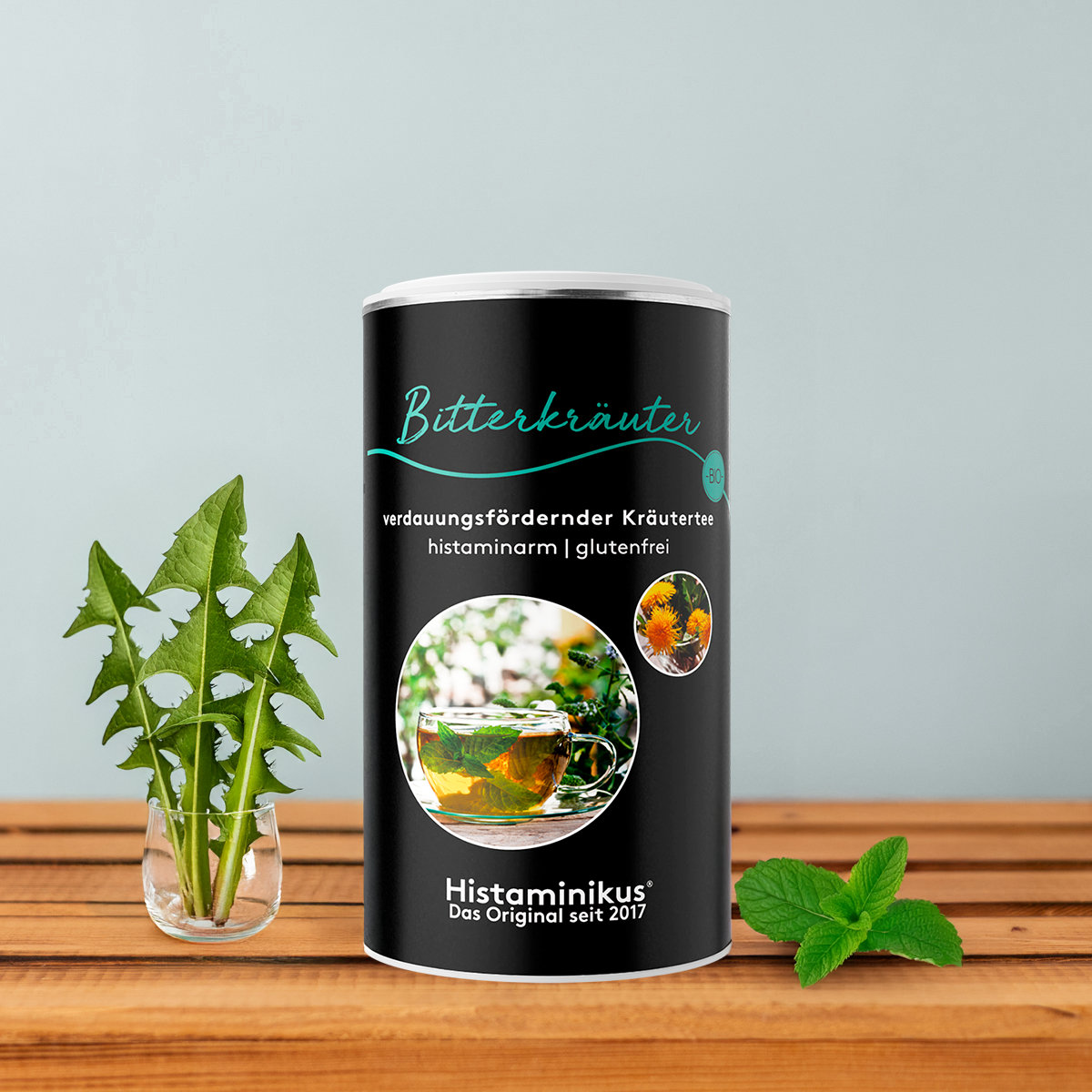
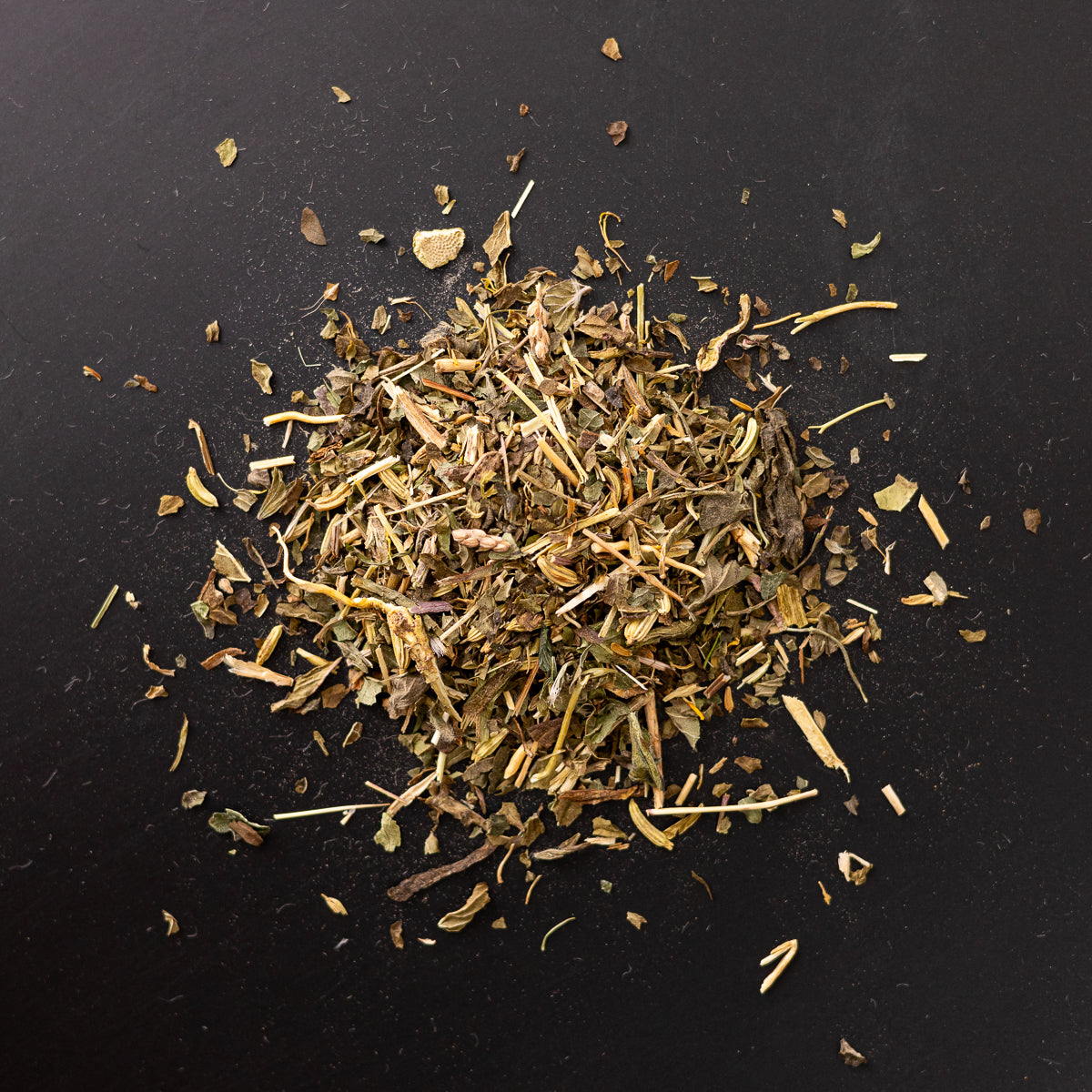


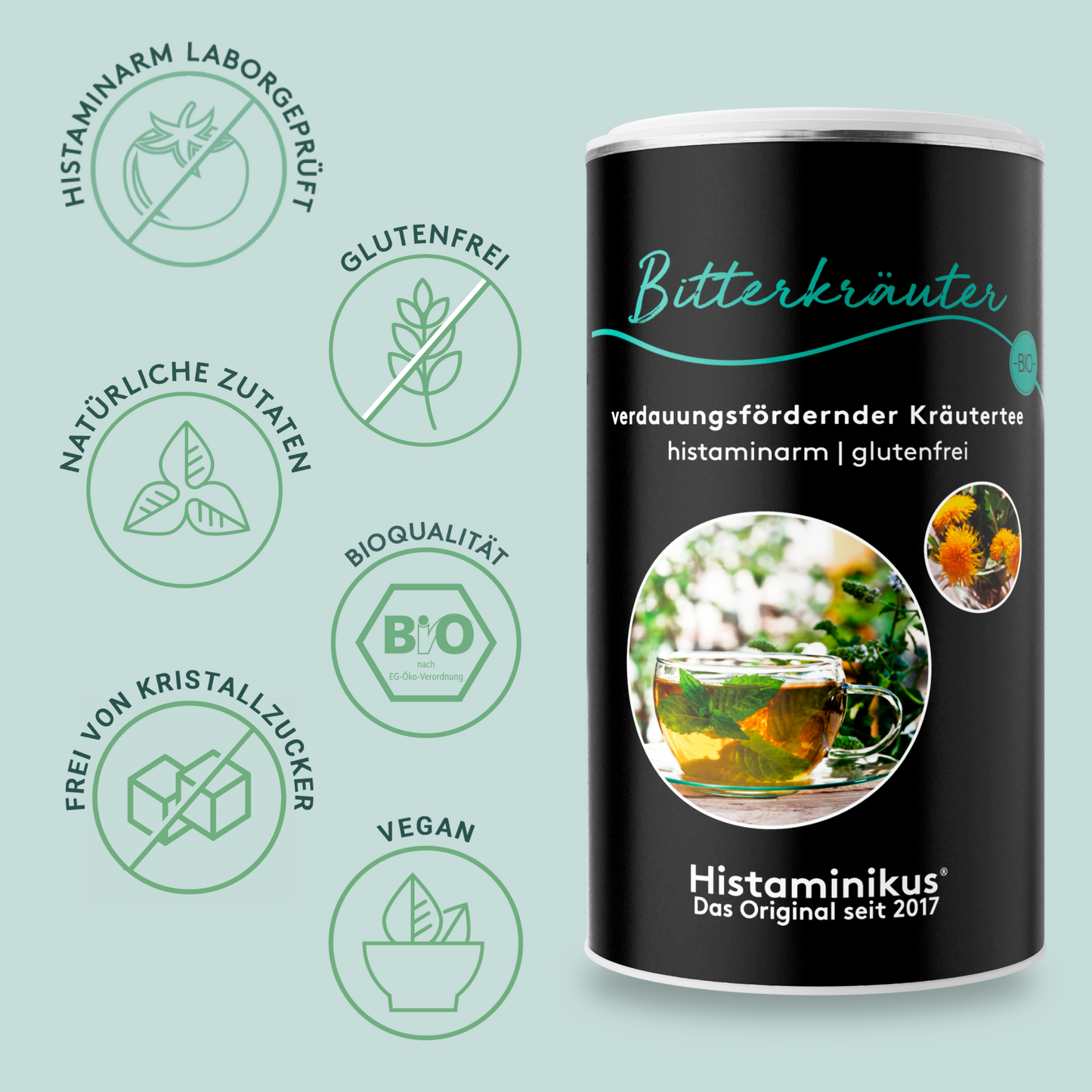

Connection with histamine intolerance
Histamine is responsible for stomach acid production. It thus causes increased stomach acid production. The muscle cells in the wall of the stomach tract are also more activated by histamine. Therefore, abdominal pain or cramps are common histamine intolerance symptoms in the digestive tract. You can find out how you can effectively support your stomach with histamine intolerance in the e-book that is our "Bitter herbs tea“Gives free of charge.
Symptoms and diseases in histamine intolerance
Because the symptoms are not clear - and can also indicate an irritable bowel, for example - histamine intolerance is often not recognized or only recognized late.
- Gastritis, colitis, irritable stomach, irritable bowel
- Gastric mucosal inflammation
- Bloating and meteorism - air shifts the stomach towards the diaphragm
- Chronic diarrhea, and constipation
- Abdominal pain or cramps
- Gastric acid surplus: acidification, heliobacter pylori, sodburn
- Gastric acid deficiency: susceptibility to bacteria, fungi, parasites; Mineral and trace element deficiency; Underweight due to lack of nutrients
- Disorder of the intestinal flora (imbalance in the intestinal bacteria), putrefaction flora
- nausea
- Reflux, feeling of fullness, regular regurgitation
- Vitamin B 12 deficiency
- Liver, bile, pancreatic gland disease or weakness (lack of gastric acid and digestive juices)
- Inflammation, allergies, food intolerance
- Fatigue and loss of energy after eating
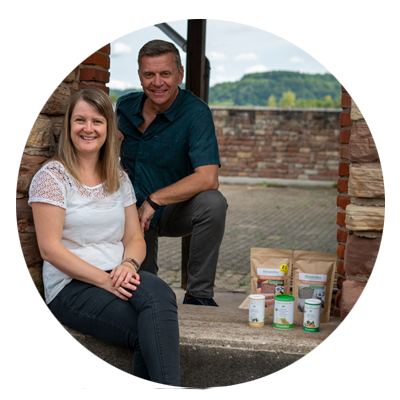
From those affected for those affected
We are Thomas and Michaela Zinser, founder of Histaminikus.
Because of the own histamine intolerance of Michaela and our son, we founded Histaminikus. The frustration does not find any suitable histamine food has spurred us to develop low -histamine food.
We would like to give you back a piece of quality of life. Feel free to look around with us.
Kind regards
Thomas and Michaela


